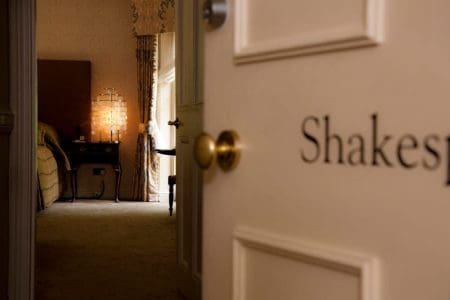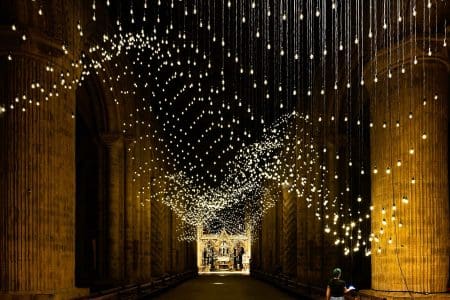Roger Hermiston and Eileen Wise check into Cley Windmill, Norfolk, go birdwatching, have a brush with a headless queen, and discover an inspirational wildlife sanctuary.
Back in the Middle Ages East Anglia was the economic, religious and cultural powerhouse of England. Norwich was the country’s second city, and all the way around the coast from King’s Lynn in Norfolk down to Dunwich in Suffolk the ports flourished with constant trade to the Low Countries and beyond to Iceland and Scandinavia.
Our latest trip to North Norfolk took us to one of the busiest ports in Europe in those heady days, the quaintly-named Cley-next-the-Sea. In the early 14th century this was a bustling harbour on the River Glaven, exporting fish, grain, malt, coal, cloth, salt and barley across the North Sea; the Flemish gables in the village today are one reminder of its rich past, together with the regal St Margaret’s Church which once lay at the harbour’s edge.
Today visitors can admire Cley’s rich history, which abounds with stories such as the one about the local mariners who captured Prince James, the heir to the Scottish throne, as he was fleeing to France in 1406. But more likely than not, they are here for some of the UK’s best birdwatching on the Cley and Salthouse Marshes, a magnificent nature reserve run by the Norfolk Wildlife Trust.
Cley Windmill Hotel
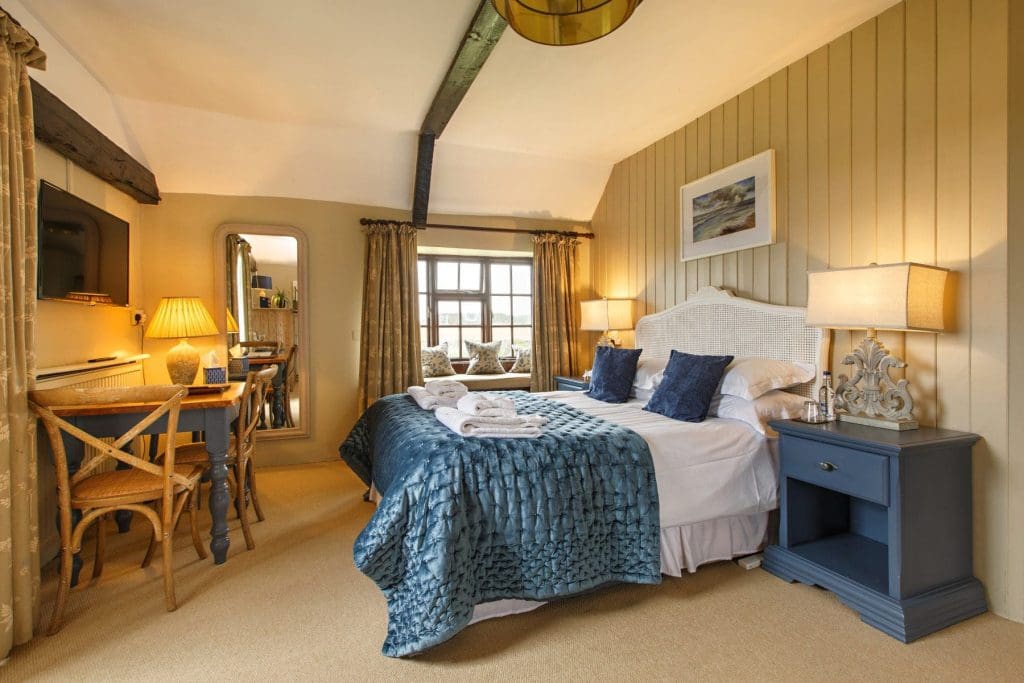
We planned to enjoy both the history and the birds, and we chose to stay in the area’s most notable landmark, the converted Cley Windmill, sited at one end of the now empty quay and right on the marshes. This impressive five-storey tower mill, towering over the landscape like a semaphoring giant, was built in 1713, first grinding and exporting corn and storing large quantities of coal. It had finally outlived its economic usefulness by 1921, and since the early 1980s has been a unique hotel or bed and breakfast venue as Cley has inevitably embraced the demands of the tourist industry.
First and foremost, Cley Windmill is all about location, location, location. The views from the bedrooms – ours, The Stone Room, has its own private balcony outside – over the reed beds and saltmarshes towards Blakeney Harbor are breathtaking. Then once you leave the walled garden you are immediately onto a path which leads you straight down (a 15-minute walk away) to the pebble and single beach of Cley.
Of the nine rooms in the Windmill the Stone Room, second highest up in the tower, is as dramatic as they come, a circular double bedroom with a high ceiling and enormous oak beams (on which the original grinding stones once turned). Apparently this was the favourite room of world-famous singer James Blunt, when the windmill was in his family’s possession.
The bed was very comfortable and the ensuite bathroom well equipped. But the real joy of this room is to sit outside on the balcony with a book in hand, looking up from time to time to enjoy the sights and sounds of the beautiful Norfolk landscape.
The staff at the Cley Windmill are quick to respond to any demands, and most helpful in providing tips for places to visit nearby. After a fortifying breakfast including an excellent Eggs Benedict, we strode out to get a feel of the village.
Cley-next-the-Sea
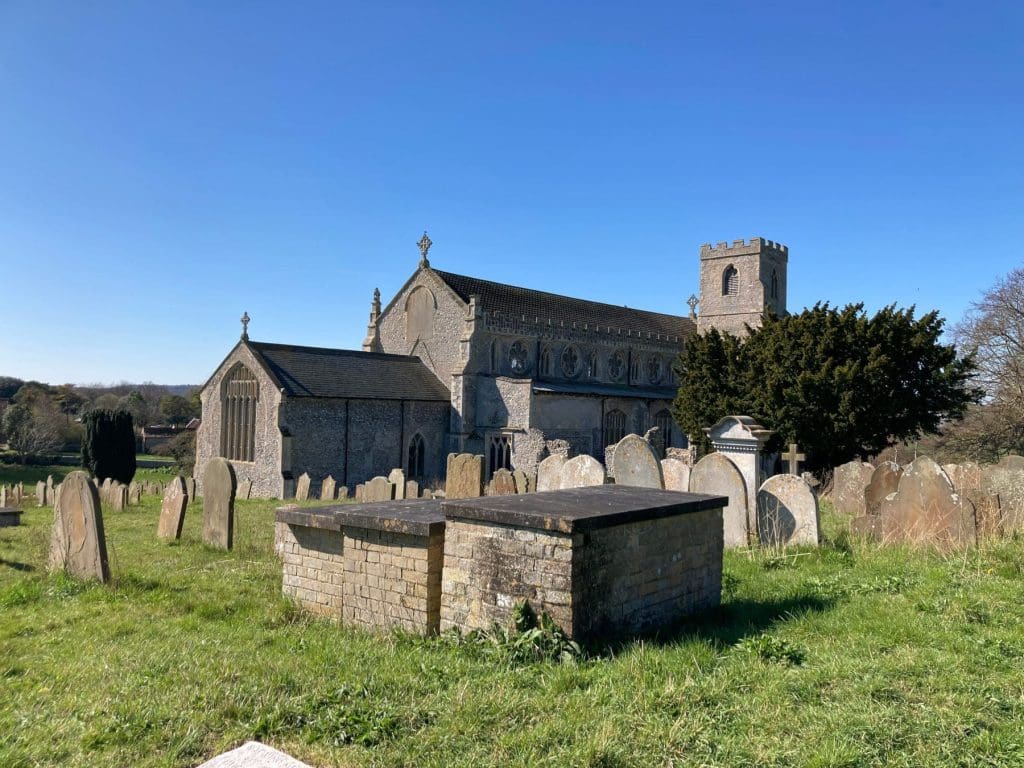
We first walked a mile or so to admire St Margaret’s Church, whose cathedral-like proportions are testament to the wealthy links Cley had with Hanseatic (German) traders back in the Middle Ages. The vast west window is one of the largest in Norfolk, and the south porch, emblazoned with shields, tells us that this was a church supported by local families – the de Vauxs the most prominent – and built to last.
The intricately carved bosses in the vaulting feature some extraordinary scenes – including an angry woman chasing a fox who has stolen her cockerel, and two devils beating the bare buttocks of a man!
This is a church that doesn’t rest on its laurels. If you look closely at the stained-glass windows you’ll see an image of a white-crowned sparrow, an American bird not usually seen in the UK. After the bird paid a visit to Cley in 2008 to huge excitement, birdwatchers clubbed together and donated more than £6,000 to commemorate the event with this image.
On walking back into the village we passed The Three Swallows, a characterful pub which we chose for dinner on our second night. For our first evening meal we took the short drive along the coast to Salthouse, to the Dun Cow where fish & chips and sauted gnocchi went down very well in equally cosy surroundings, with rooms of original oak beams and exposed fireplaces.
There are some splendid shops in the village of Cley, which is adorned with attractive Flemish and Georgian houses. Picnic Fayre, established 30 years ago, is a terrific delicatessen with the widest range of chutneys and jellies you could ever wish to see. On the other side of the road, the Cley Smokehouse has a mouth-watering array of freshly smoked fish, cured meats and homemade pates. Then further up the High Street the friendly Crabpot Books has an extensive range of second-hand fiction and non-fiction.
Birdwatching at Cley Beach
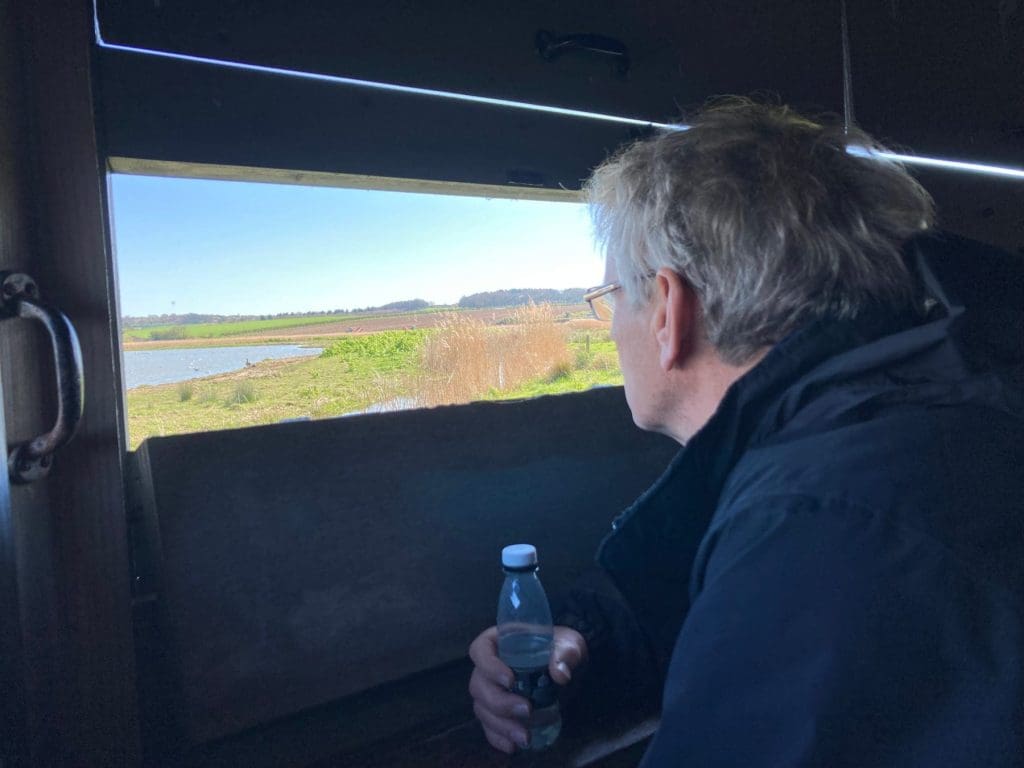
We then left the village and walked across the marshes towards the beach, stopping off in a couple of hides to scan the pools and the reeds in the hope of catching the elusive bittern. Instead we had to make do with the avocet, little grebe, snipe and tufted duck, with the additional excitement of appearances by the marsh harrier and Egyptian goose.
At the beach, not far from the car-park, a large crowd of excited ‘birders’ had gathered having apparently received intelligence that another rare species had showed up – not, however, our source told us, another white-crowned sparrow!
Blickling Hall
In this part of the world, largely through that wealth accumulated in its heyday in the Middle Ages, you are never too far from a majestic country house. On the way to Cley we had paid a visit to Blickling Hall, an imposing Jacobean mansion built on the foundations of a Tudor manor house by a wealthy London lawyer, Sir Henry Hobart. It also has a large lake and 4,500 acres of well-kept grounds.
Hobart is a relatively uninteresting figure; instead it is the Tudors who pull in the crowds because Blickling Hall – although there is no definitive proof – is reckoned by most historians to be the birthplace (probably in 1507) of the ill-fated Anne Boleyn, second wife of Henry VIII.
There is an exquisite 1760s life-size carved wood bas-relief of the unhappy Queen on the staircase in the main entrance hall, with a similar portrait of her daughter Queen Elizabeth in the opposite alcove. Excitingly, legend has it that the ghost of the young queen appears at Blickling Hall every year at midnight on 19 May – the day she was beheaded on Tower Hill. Apparently she dresses in white, carries her severed and bloody head under her arm, and roams the corridors until sunrise!
But the last owner of this majestic mansion, before the National Trust took it over in 1940, was a remarkable man who played a vital role in ensuring Britain’s survival in World War 2. He was Philip Kerr, the 11th Marquess of Lothian, Churchill’s ambassador to Washington, who helped persuade Roosevelt to sign the Lend-Lease Act through which America supplied the UK essential military and economic aid with which to fight the Nazis in those dark early days of the war.
There is a striking portrait and several photographs of this remarkable man dotted around the rooms. In a different way from Blickling’s other famous inhabitant, his end was tragic: he had a relatively straightforward liver complaint, but as a Christian Scientist refused medical treatment and consequently, unnecessarily, died aged 58 in December 1940.
Hillside Animal Sanctuary
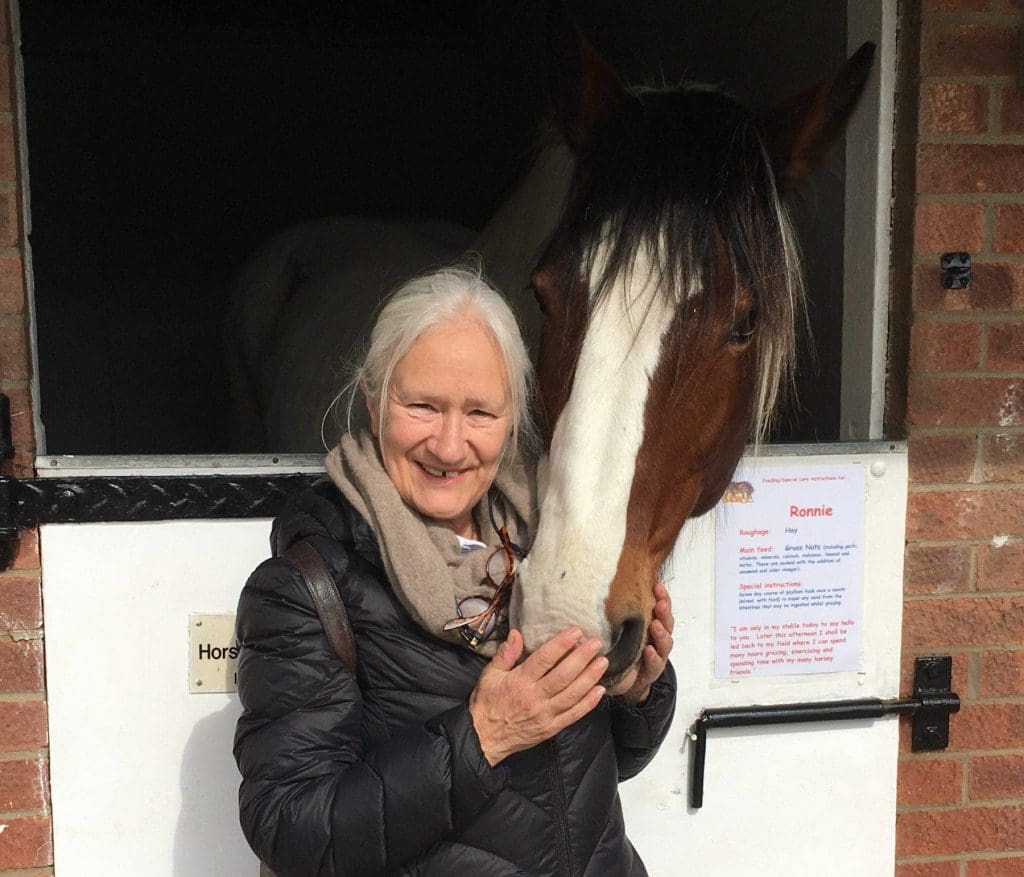
On the morning after departing the Windmill we made a detour on our way home to South Suffolk, to the Hillside Animal Sanctuary in Frettenham. This is a heartwarming place, founded in 1995 to give sanctuary to several thousand horses, ponies, donkeys, dogs, deer, goats, pigs, and birds, either because they had been appallingly ill-treated by their owners (in many cases left to die) or been the victims – or would-be victims – of shocking farming practices.
So the charity combines a simple animal welfare role with investigating and campaigning against the intensive factory farming industry. Some of the individual stories are very disturbing, but all the animals have been lovingly restored to health and fitness, and Hillside is a wonderful place, especially for young children, to get close up and personal with them.
There’s plenty of space for the animals in extensive fields and spacious pens. The stars of the show on the day were the Shire horses, and we made friends with beautiful, sweet-tempered Ronnie, his missus Lady and their son Merlin. All had arrived at Hillside following a major cruelty investigation back in 2012, but are clearly loving their lives and all the attention they receive.
It was an uplifting visit and an excellent way to conclude our second trip of the year to this fascinating part of the country.
Cley Windmill, Norfolk
For more information on Cley Windmill, Norfolk, click here. To read about Roger and Eileen’s previous trip to Norfolk, click here.
